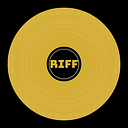Can you tell the difference between an EP, an LP and an album?
It’s not only about length.
The terms “LP” and “EP” in the context of music date back to the early days of recorded music and are related to the formats in which music was released. Since the invention of the CDs, we often refer to an “Album” when an artist makes his/her comeback to the musical scene.
But what is the difference between them all?
These three terms are sometimes confused and used as synonyms. Indeed, all three represent a musical artistic project finalized and ready to be shared with the general public but nevertheless, there are indeed differences and it can be useful to know how to distinguish them when one is interested a little more closely to music publishing.
What is an LP?
First came the LP, launched by the Columbia Records label in June 1948 in the United States and then by Philips in 1949 in Europe (founded by the Dutch electronics company Philips and the Dutch-American largest record label company Universal Music Group).
The LP musical format was invented to contain multiple tracks on a vinyl, as the initial standard format for recorded music was the 78 RPM (revolutions per minute) record, which held just one song on each side and had limited playing time.
The LP (“Long Play” in English) is a long recording. It usually has between eight and twelve titles, similar to an album. Its length is between forty and sixty minutes in general, but the initials LP are used to signify that the sounds are engraved on vinyl records containing multiple tracks or songs on each side. Each vinyl is generally thirty centimetres in diameter (33 turns).
Shortly after the invention of the EP, the appearance of the EP came along.
Why use an LP?
- Full-Length Collection: When you have a substantial amount of material, typically 10 or more tracks, that fits together cohesively, an LP is the traditional choice for creating a full-length album.
- Storytelling or Concept: If your music tells a story or follows a specific concept that requires multiple tracks to convey, an LP format provides the space to do so.
- Artistic Expression: When you want to fully explore and showcase your artistic depth, an LP allows for a more comprehensive and immersive listening experience. Established artists often release LPs because they have a dedicated fanbase that expects a more extensive body of work.
What is an EP?
An EP (which takes its name from the English “Extended Play”). It has its roots in the early days of vinyl records and was introduced around the same time as the LP. While LPs were designed for longer playing times and full albums, EPs were developed to bridge the gap between singles and LPs: contains more tracks than a single but fewer tracks than a full-length album.
It generally has a listening time of about fifteen minutes with four to six titles. It is therefore too long to be qualified as a simple single but too short to be considered as an album, it is in a way a “mini-album”.
This format appeared in the 1950s under the name of “Maxi 45 rpm”, initially on microgroove records or vinyl records seventeen centimetres in diameter. The term EP reappeared on CD media in the 2000s and is now used by a large number of artists, especially by developing artists since it represents a lower economic investment than the album format. and therefore less risk.
Why use an EP?
- Introduction or Teaser: Use an EP if you’re a new or emerging artist and want to introduce your sound to the audience without committing to a full album.
- Limited Material: When you have a smaller collection of songs (typically 3 to 6 tracks) that thematically or stylistically go together, an EP can be a good choice. This is especially common for artists who are still developing their sound.
- Experimentation: If you want to experiment with new styles or concepts without the pressure of a full album, an EP allows you to do so more quickly and with less financial commitment.
- Promotion: EPs can be used to build anticipation for an upcoming album or tour. Releasing an EP with a few standout tracks can generate interest and keep fans engaged while generating merchandising sales.
What is an album?
The album, on the other hand, is the most common format today. It also corresponds to a collection of several titles most often between forty and sixty minutes, even if it is more and more frequent to find albums with more than twelve titles. for example, Tupca’s album “All Eyez on Me” including 27 songs.
There are exceptions though:
THE POCKET GODS holds the Guinness World Records with an album of 1000 tracks!
Albums can come in different forms, including CD, vinyl or digital. It is dedicated to a particular musical genre and bringing together several titles from different performers is called “compilations”, as are albums containing several songs by the same artist originally recorded on different discs.
Musically yours,
Break On Through

